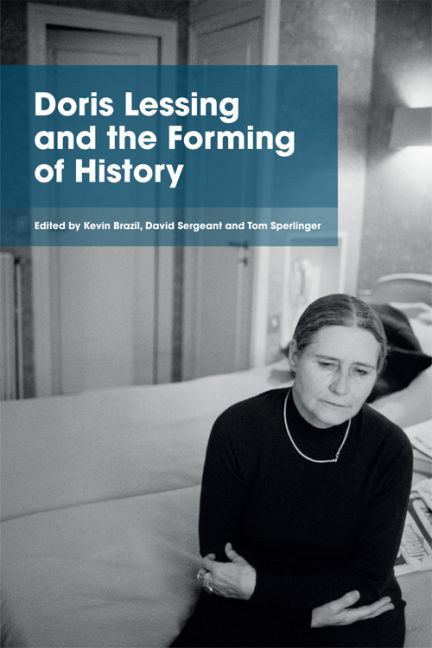Book contents
- Frontmatter
- Contents
- Acknowledgements
- Timeline
- Introduction
- 1 Early Lessing, Commitment, the World
- 2 ‘I'm an adolescent. And that's how I'm going to stay’: Lessing and Youth Culture 1956–1962
- 3 Sequence, Series and Character in Children of Violence
- 4 The Politics of Form: The Golden Notebook and Women's Radical Literary Tradition
- 5 Readers of Fiction and Readers in Fiction: Readership and The Golden Notebook
- 6 From The Grass is Singing to The Golden Notebook: Film, Literature and Psychoanalysis
- 7 ‘funny thing laughter, what's it for?’: Humour and Form in Lessing's Fiction,A
- 8 Lessing and the Scale of Environmental Crisis
- 9 Lessing and Time Travel
- 10 Lessing's Interruptions
- 11 Lessing's Witness Literature
- 12 A Catastrophic Universe: Lessing, Posthumanism and Deep History
- Select Bibliography
- Notes on Contributors
- Index
8 - Lessing and the Scale of Environmental Crisis
Published online by Cambridge University Press: 26 May 2017
- Frontmatter
- Contents
- Acknowledgements
- Timeline
- Introduction
- 1 Early Lessing, Commitment, the World
- 2 ‘I'm an adolescent. And that's how I'm going to stay’: Lessing and Youth Culture 1956–1962
- 3 Sequence, Series and Character in Children of Violence
- 4 The Politics of Form: The Golden Notebook and Women's Radical Literary Tradition
- 5 Readers of Fiction and Readers in Fiction: Readership and The Golden Notebook
- 6 From The Grass is Singing to The Golden Notebook: Film, Literature and Psychoanalysis
- 7 ‘funny thing laughter, what's it for?’: Humour and Form in Lessing's Fiction,A
- 8 Lessing and the Scale of Environmental Crisis
- 9 Lessing and Time Travel
- 10 Lessing's Interruptions
- 11 Lessing's Witness Literature
- 12 A Catastrophic Universe: Lessing, Posthumanism and Deep History
- Select Bibliography
- Notes on Contributors
- Index
Summary
As Timothy Clark recently noted, ‘the intellectual challenges of the Anthropocene and its unreadability’ raise ‘the inevitable question of scale’: it ‘enacts the demand to think of human life at much broader scales of space and time’ (2015a: 13). Lessing's writing was essentially concerned with questions of scale from the very beginning, as Adam Guy's chapter earlier in this volume has shown: tracing how Lessing's attempts to use number to render the scale of political commitment in the 1950s were ultimately doomed. This chapter will follow Lessing's concern with scale through a later period, starting with The Four-Gated City (1969), the novel which marked both her turn to a science-fiction inflected non-realism, and the first full impact of the Sufism related by Idries Shah. A split response to the problem of scale determines how Lessing's fiction develops from this point, in novels such as Shikasta(1979) and Mara and Dann: An Adventure (1999).It also makes her work an unusually eloquent intervention in debates about the relationship between criticism, literature and environmental crisis, as it encapsulates two divergent paths which emerge from this meeting.
Despite the breadths of time and space that this topic immediately invites, we start with the start of The Four-Gated City, and a teacup:
She sat by a rectangle of pinkish oilcloth where sugar had spilled, and on to it, orange tea, making a gritty smear in which someone had doddled part of a name: Daisy Flet … Her cup was thick whitey-grey, cracked. The teaspoon was a whitish plastic, so much used that the elastic brittleness natural to it had gone into an erosion of hair lines, so that it was like a kind of sponge. When she had drunk half the tea, a smear of grease appeared half-way down the inside of the cup: a thumb mark. How hard had some hand – attached to Iris, to Jimmy? – gripped the cup to leave a smear which even after immersion in strong orange tea was a thumbprint good enough for the police? (11, ellipsis in original)
The passage anticipates environmentally engaged theorising by Donna Haraway and others in which categories such as natural and cultural, human and non-human are blurred.
- Type
- Chapter
- Information
- Doris Lessing and the Forming of History , pp. 111 - 127Publisher: Edinburgh University PressPrint publication year: 2016



